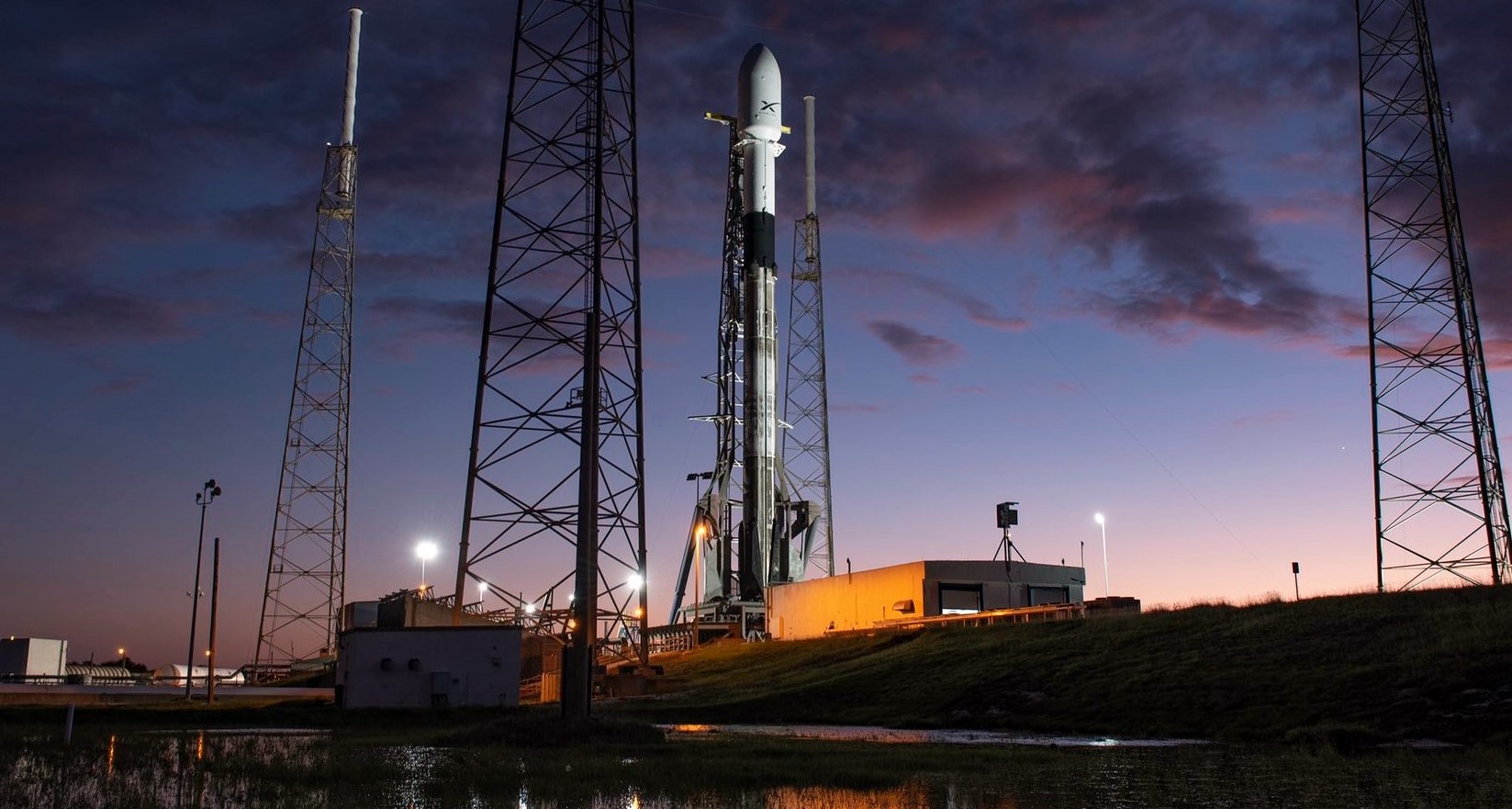
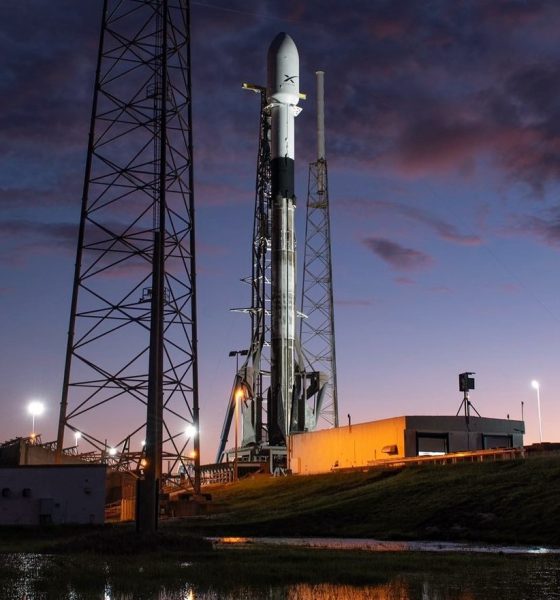
News
SpaceX Falcon 9 Starlink launch eyes two reusability milestones as new satellite details emerge
SpaceX is set for Falcon 9’s first orbital launch in more than three months. Known as Starlink-1, the mission will launch the company’s heaviest satellite payload ever and feature an impressive array of Falcon 9 booster and fairing reusability milestones.
Flatsat stack
Prior to Falcon 9 going vertical on the launch pad, SpaceX technicians had to construct and encapsulate a massive stack of 60 Starlink satellites, each weighing more than 260 kg (570 lb) apiece. This is the second time SpaceX has launched sixty of the advanced spacecraft, although the satellites that will launch on Starlink-1 feature a number of upgrades and refinements not present on the Starlink v0.9 satellites that launched in May 2019.
Without an identical angle from the Starlink v0.9 mission to compare against, it’s difficult to immediately point out visual differences between v0.9 and v1.0 spacecraft. Still, there are some clear general changes. Most notably, SpaceX appears to have dramatically reduced the area of shiny, metallic surfaces. Additionally, the small downward-facing dishes just left of center in the above image were not obviously present on Starlink v0.9 satellites or SpaceX’s official renders.
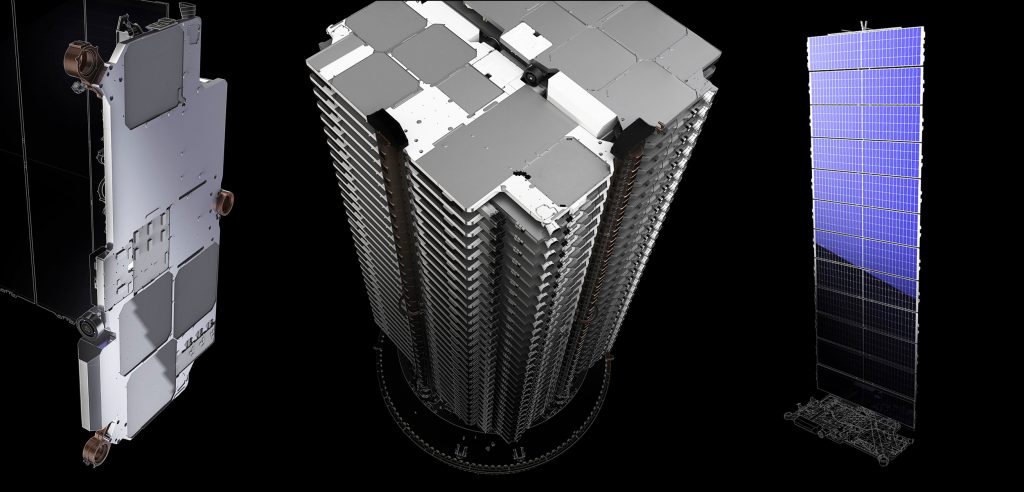
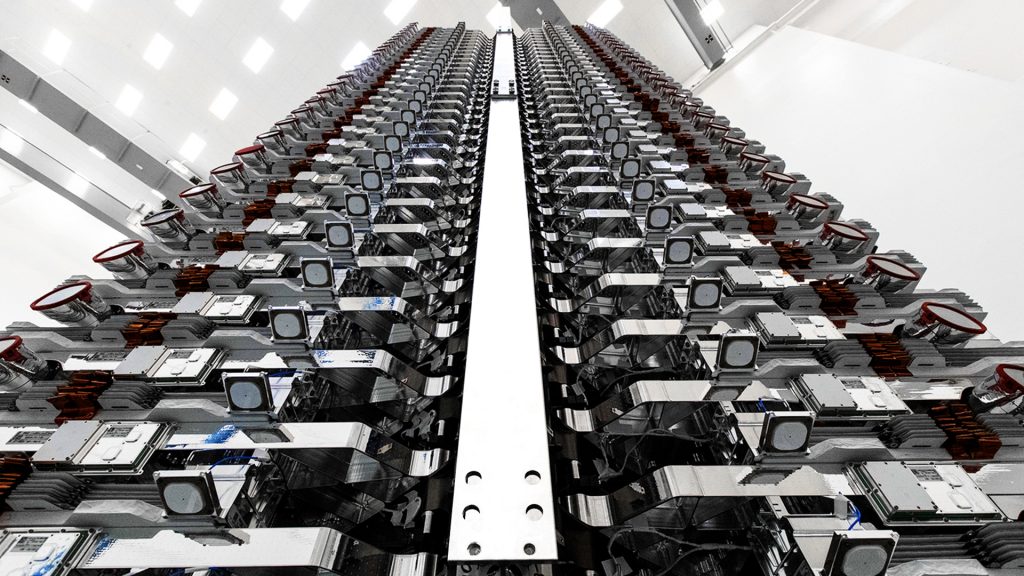
Those new dishes could be traditional dish antennas meant to serve as a more basic telemetry, tracking, and command (TTC) communications link for ground controllers. They could even be a prototype of Starlink’s planned inter-satellite laser data links. Regardless, it’s obvious that SpaceX is continuing its preferred cycle of rapid prototyping, flight-testing, and data-based refinement with Starlink.
SpaceX is also focused on dramatically lowering the albedo (reflectivity) of Starlink satellites and working closely with the astronomy and astrophysics communities to minimize any disruption the spacecraft might cause for scientific observations of the night sky. For any part that will be ground-facing during routine operations, this likely involves replacing shiny surfaces with matte finishes and adding dark or non-reflective coatings/insulation where possible, among other potential tweaks.
The more milestones, the merrier
Beyond the many apparent satellite upgrades Starlink-1 is set to debut, the mission will also mark no less than three (or possibly even four) reusability milestones. Falcon 9 booster B1048 has been selected by SpaceX to support Starlink-1 and has already completed three successful orbital-class missions since it debuted in July 2018. Assuming all goes well, B1048 will thus become the first SpaceX booster to launch (and land) four times, an excellent – if increasingly unsurprising – step forward for Falcon 9’s Block 5 upgrade. Falcon 9 B1048 will attempt its fourth landing – this time on drone ship Of Course I Still Love You (OCISLY) – shortly after launch.
Designed to enable up to 10 reuses of each Falcon booster, the successful completion of Starlink-1 will place Block 5 just one reuse away from the halfway point to proving its 10-reuse design. While Block 5 has yet to materialize any tangible improvements in booster turnaround time, an imminent ramp in Starlink launch cadence will hopefully give SpaceX plenty of opportunities to start making progress on that front.
Starlink-1 is also set to mark the inaugural launch of a flight-proven Falcon 9 fairing, essentially putting a bow on the bulk of SpaceX’s challenging fairing recovery and reusability development. Unintuitively, Starlink-1’s fairing previously supported Falcon Heavy Block 5’s April 209 launch debut, meaning that both halves traveled both faster and higher than any halves that previously attempted recovery.
Simultaneously, both halves splashed down in the Atlantic Ocean with no attempt to catch them, meaning that SpaceX has apparently successfully refurbished the fairings despite the fact that their recovery was more or less the worst-case scenario.
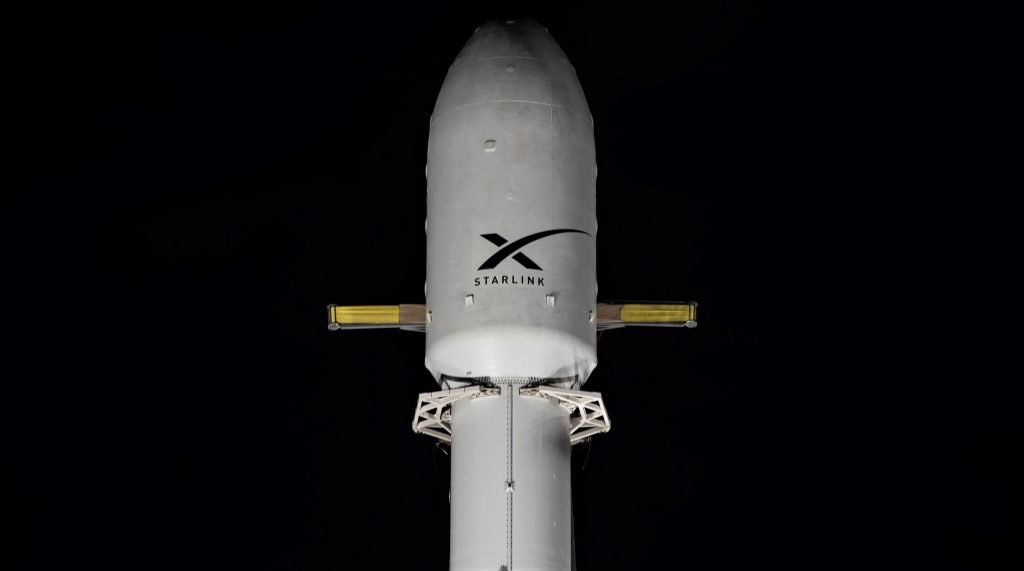
Last but not least, Starlink-1 will also mark the first time SpaceX’s just-finished fairing recovery ship GO Ms. Chief attempts to catch a Falcon 9 fairing, as well as the first time two fairing recovery ships – Ms. Tree & Ms. Chief – attempt to catch both halves of a Falcon fairing after launch. The twin recovery vessels departed Port Canaveral, Florida a few days ago and arrived at their recovery point ~750 km (460 mi) downrange on November 10th.
Finally, thanks to the fact that Falcon 9’s fairing is flight-proven, Starlink-1 will additionally feature the first attempted recovery (catch or splashdown) of a flight-proven Falcon fairing. SpaceX could scarcely fit in another milestone if it wanted to go out of its way to do so.
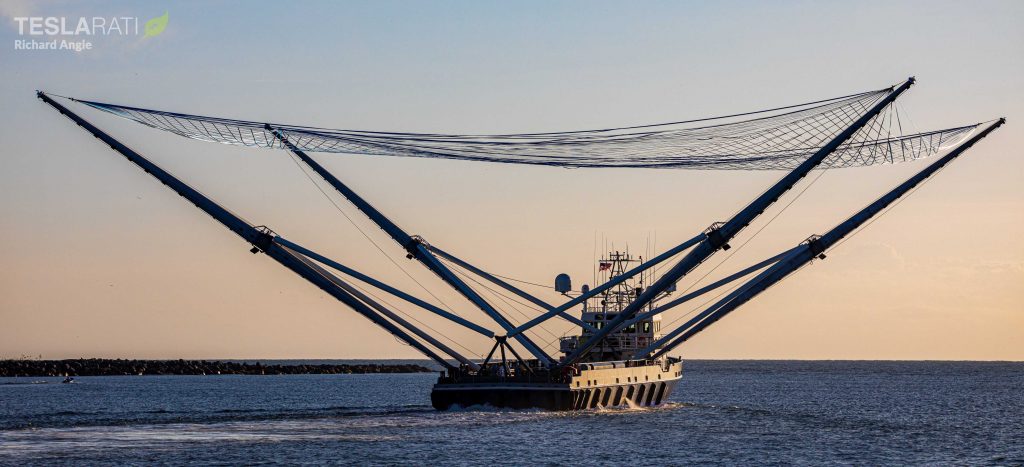
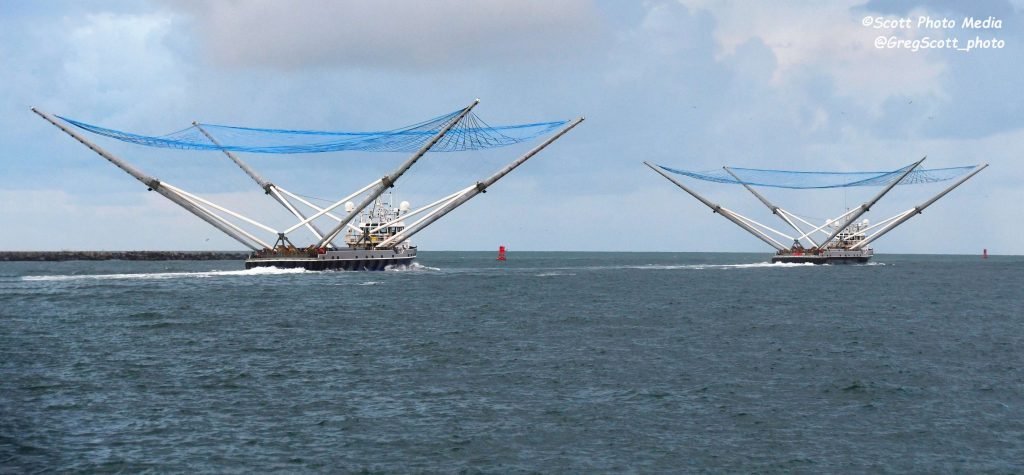
Falcon 9 is scheduled to lift off no earlier than 9:56 am ET (14:56 UTC), November 11th. Weather is 80% GO and SpaceX has a backup launch window around the same time on November 12th with a 70%-favorable weather forecast.
Check out Teslarati’s Marketplace! We offer Tesla accessories, including for the Tesla Cybertruck and Tesla Model 3.

News
Tesla accused of infringing robotics patents in new lawsuit
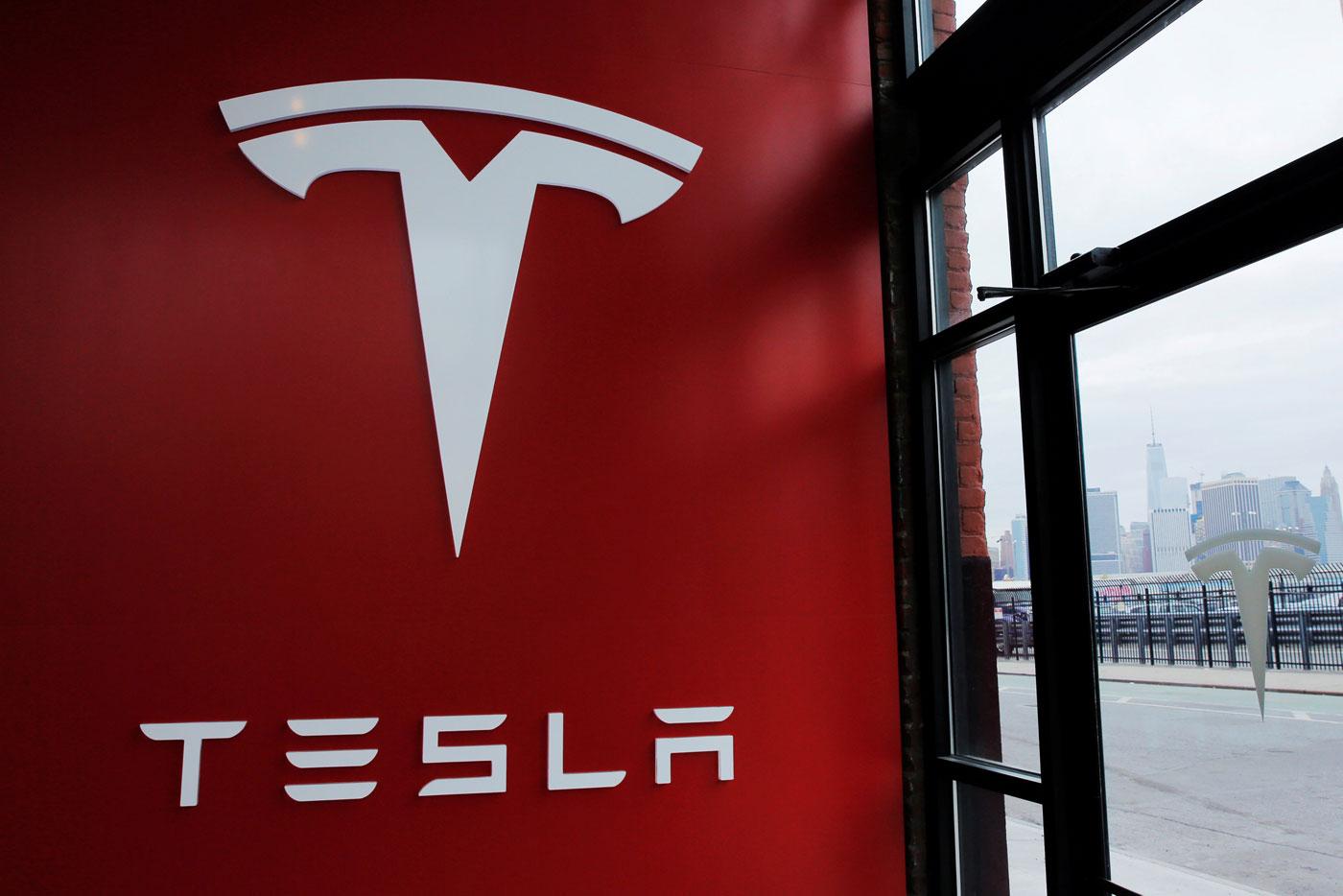
Tesla is being accused of infringing robotics patents by a company called Perrone Robotics, which is based out of Charlottesville, Virginia.
The suit was filed in Alexandria, Virginia, and accuses Tesla of knowingly infringing upon five patents related to robotics systems for self-driving vehicles.
The company said its founder, Paul Perrone, developed general-purpose robotics operating systems for individual robots and automated devices.
Perrone Robotics claims that all Tesla vehicles utilizing the company’s Autopilot suite within the last six years infringe the five patents, according to a report from Reuters.
Tesla’s new Safety Report shows Autopilot is nine times safer than humans
One patent was something the company attempted to sell to Tesla back in 2017. The five patents cover a “General Purpose Operating System for Robotics,” otherwise known as GPROS.
The GPROS suite includes extensions for autonomous vehicle controls, path planning, and sensor fusion. One key patent, U.S. 10,331,136, was explicitly offered to Tesla by Perrone back in 2017, but the company rejected it.
The suit aims to halt any further infringements and seeks unspecified damages.
This is far from the first suit Tesla has been involved in, including one from his year with Perceptive Automata LLC, which accused Tesla of infringing on AI models to interpret pedestrian/cyclist intent via cameras without licensing. Tesla appeared in court in August, but its motion to dismiss was partially denied earlier this month.
Tesla also settled a suit with Arsus LLC, which accused Autopilot’s electronic stability features of infringing on rollover prevention tech. Tesla won via an inter partes review in September.
Most of these cases involve non-practicing entities or startups asserting broad autonomous vehicle patents against Tesla’s rapid iteration.
Tesla typically counters with those inter partes reviews, claiming invalidity. Tesla has successfully defended about 70 percent of the autonomous vehicle lawsuits it has been involved in since 2020, but settlements are common to avoid discovery costs.
The case is Perrone Robotics Inc v Tesla Inc, U.S. District Court, Eastern District of Virginia, No. 25-02156. Tesla has not yet listed an attorney for the case, according to the report.
News
Tesla has passed a critical self-driving milestone Elon Musk listed in Master Plan Part Deux
Tesla China announced that the company’s Autopilot system has accumulated 10 billion kilometers of driving experience.
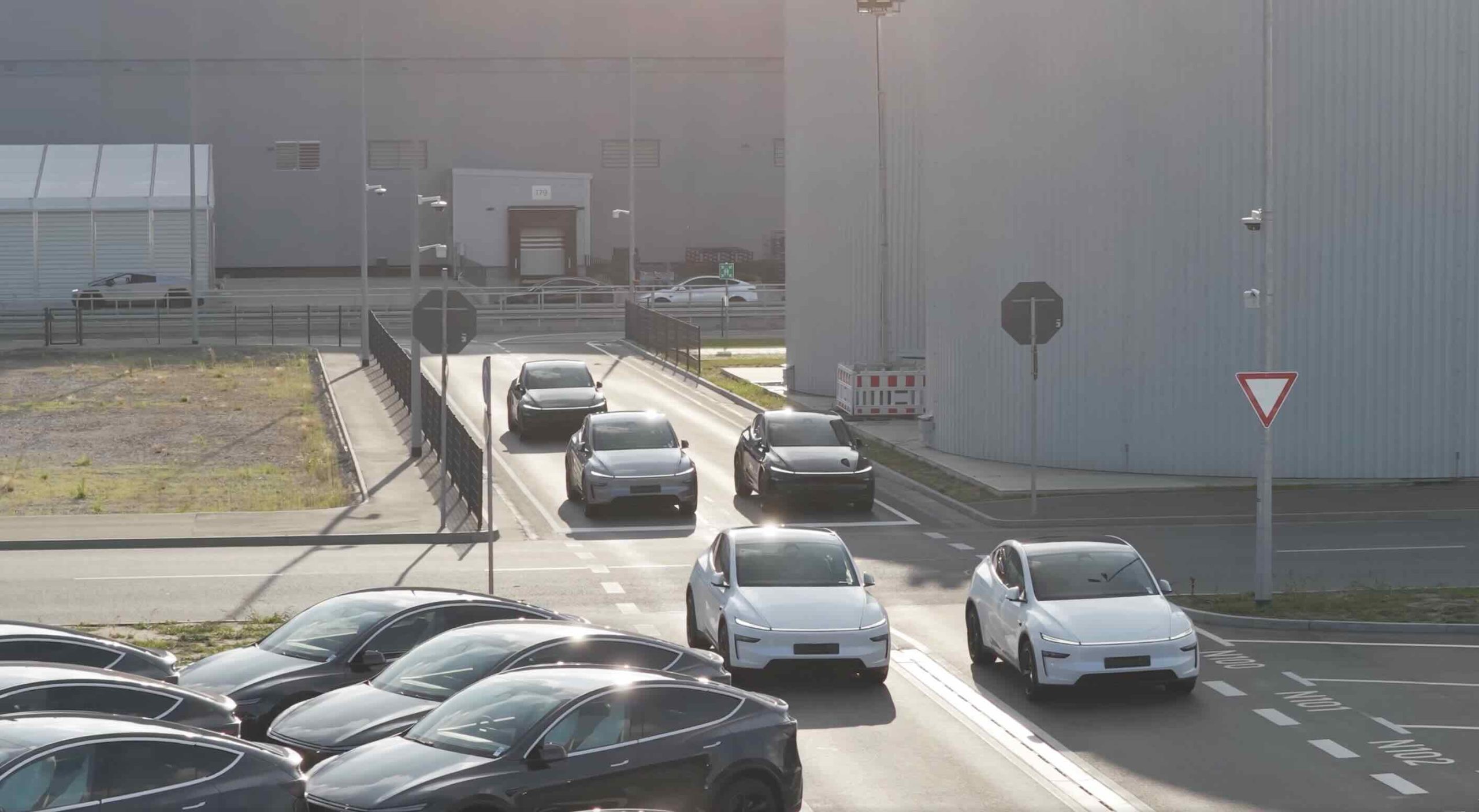
Tesla has passed a key milestone, and it was one that CEO Elon Musk initially mentioned more than nine years ago when he published Master Plan, Part Deux.
As per Tesla China in a post on its official Weibo account, the company’s Autopilot system has accumulated over 10 billion kilometers of real-world driving experience.
Tesla China’s subtle, but huge announcement
In its Weibo post, Tesla China announced that the company’s Autopilot system has accumulated 10 billion kilometers of driving experience. “In this respect, Tesla vehicles equipped with Autopilot technology can be considered to have the world’s most experienced and seasoned driver.”
Tesla AI’s handle on Weibo also highlighted a key advantage of the company’s self-driving system. “It will never drive under the influence of alcohol, be distracted, or be fatigued,” the team wrote. “We believe that advancements in Autopilot technology will save more lives.”
Tesla China did not clarify exactly what it meant by “Autopilot” in its Weibo post, though the company’s intense focus on FSD over the past years suggests that the term includes miles that were driven by FSD (Beta) and Full Self-Driving (Supervised). Either way, 10 billion cumulative miles of real-world data is something that few, if any, competitors could compete with.
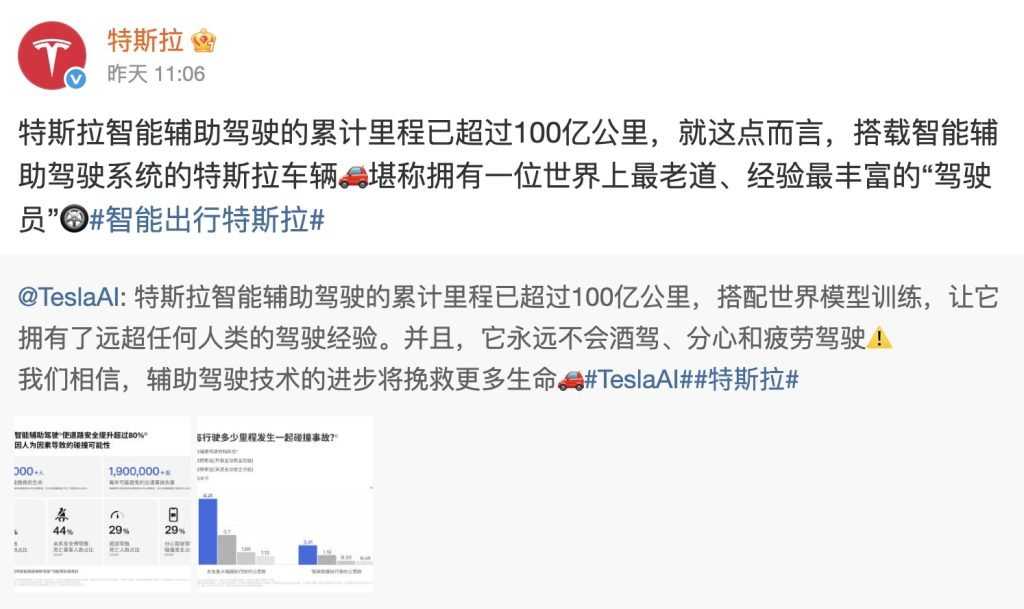
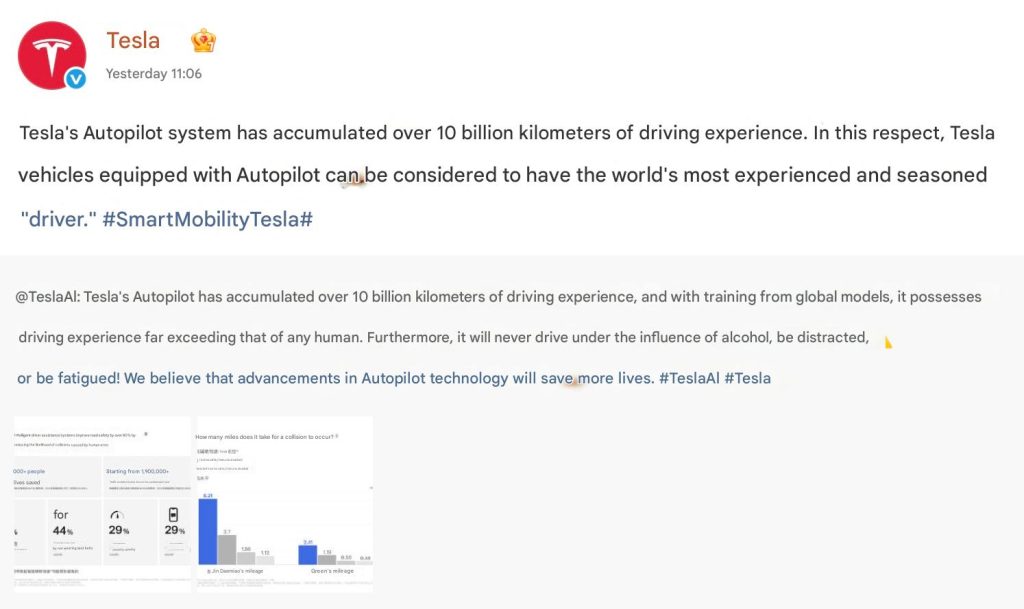
Elon Musk’s 10-billion-km estimate, way back in 2016
When Elon Musk published Master Plan Part Deux, he outlined his vision for the company’s autonomous driving system. At the time, Autopilot was still very new, though Musk was already envisioning how the system could get regulatory approval worldwide. He estimated that worldwide regulatory approval will probably require around 10 billion miles of real-world driving data, which was an impossible-sounding amount at the time.
“Even once the software is highly refined and far better than the average human driver, there will still be a significant time gap, varying widely by jurisdiction, before true self-driving is approved by regulators. We expect that worldwide regulatory approval will require something on the order of 6 billion miles (10 billion km). Current fleet learning is happening at just over 3 million miles (5 million km) per day,” Musk wrote.
It’s quite interesting but Tesla is indeed getting regulatory approval for FSD (Supervised) at a steady pace today, at a time when 10 billion miles of data has been achieved. The system has been active in the United States and has since been rolled out to other countries such as Australia, New Zealand, China, and, more recently, South Korea. Expectations are high that Tesla could secure FSD approval in Europe sometime next year as well.
Elon Musk
SpaceX maintains unbelievable Starship target despite Booster 18 incident
It appears that it will take more than an anomaly to stop SpaceX’s march towards Starship V3’s refinement.
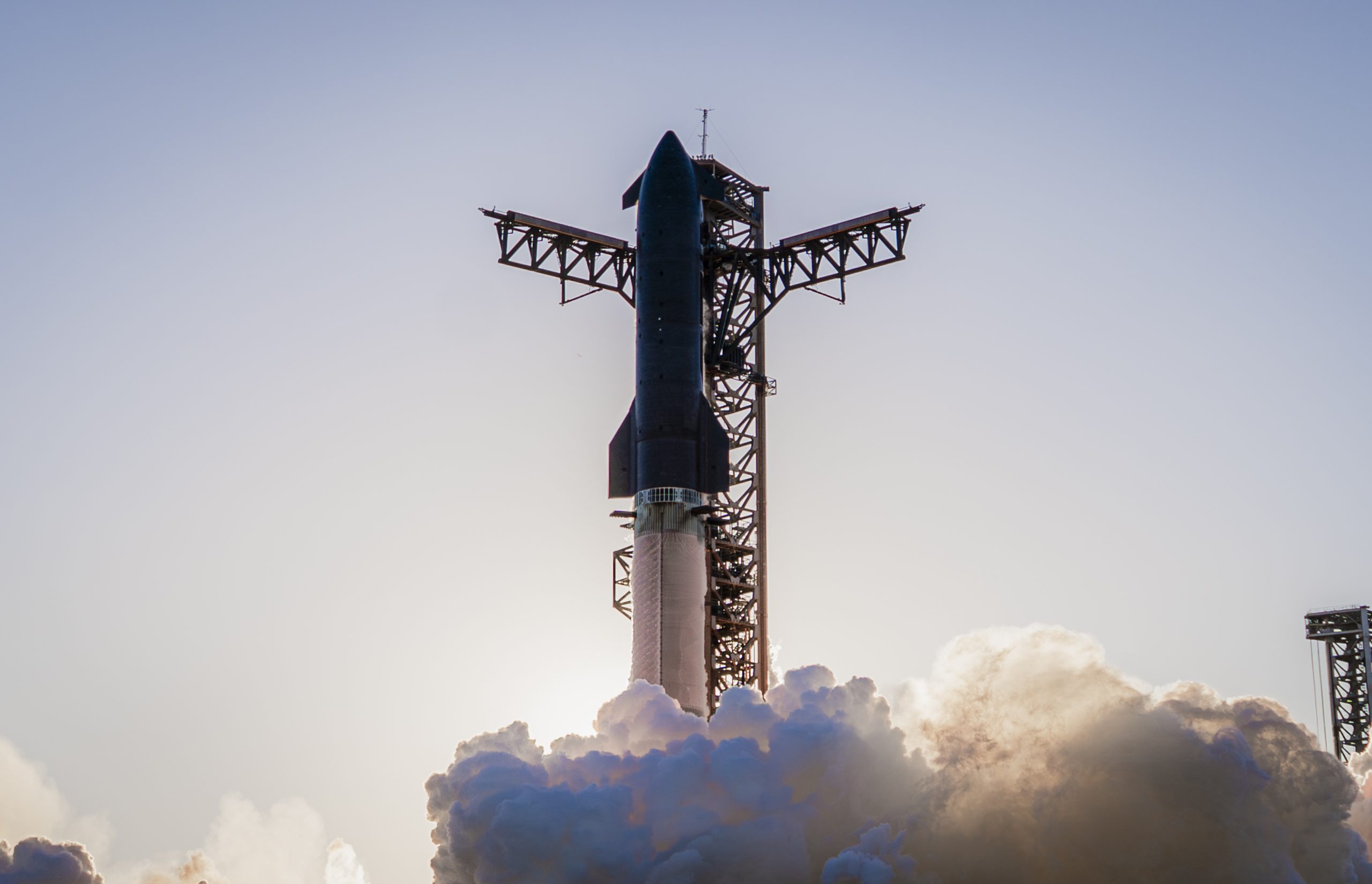
SpaceX recently shared an incredibly ambitious and bold update about Starship V3’s 12th test flight.
Despite the anomaly that damaged Booster 18, SpaceX maintained that it was still following its plans for the upgraded spacecraft and booster for the coming months. Needless to say, it appears that it will take more than an anomaly to stop SpaceX’s march towards Starship V3’s refinement.
Starship V3 is still on a rapid development path
SpaceX’s update was posted through the private space company’s official account on social media platform X. As per the company, “the Starbase team plans to have the next Super Heavy booster stacked in December, which puts it on pace with the test schedule planned for the first Starship V3 vehicle and associated ground systems.”
SpaceX then announced that Starship V3’s maiden flight is still expected to happen early next year. “Starship’s twelfth flight test remains targeted for the first quarter of 2026,” the company wrote in its post on X.
Elon Musk mentioned a similar timeline on X earlier this year. In the lead up to Starshp Flight 11, which proved flawless, Musk stated that “Starship V3 is a massive upgrade from the current V2 and should be through production and testing by end of year, with heavy flight activity next year.” Musk has also mentioned that Starship V3 should be good enough to use for initial Mars missions.
Booster 18 failure not slowing Starship V3’s schedule
SpaceX’s bold update came after Booster 18 experienced a major anomaly during gas system pressure testing at SpaceX’s Massey facility in Starbase, Texas. SpaceX confirmed in a post on X that no propellant was loaded, no engines were installed, and personnel were positioned at a safe distance when the booster’s lower section crumpled, resulting in no injuries.
Still, livestream footage showed significant damage around the liquid oxygen tank area of Booster 18, leading observers to speculate that the booster was a total loss. Booster 18 was among the earliest vehicles in the Starship V3 series, making the failure notable. Despite the setback, Starship V3’s development plans appear unchanged, with SpaceX pushing ahead of its Q1 2026 test flight target.








